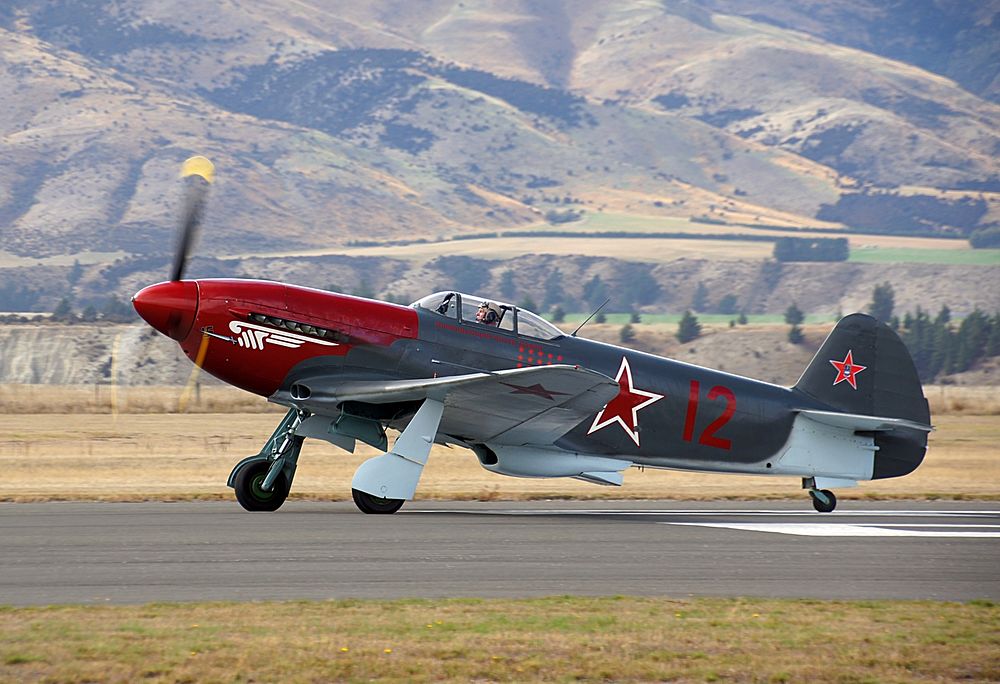https://creativecommons.org/publicdomain/zero/1.0/https://www.rawpixel.com/image/4026283

The Yak 3 was regarded as one of the finest interceptors of WWII and was nicknamed "Dogfighter Supreme." Luftwaffe pilots became accustomed to shooting down poorly equiped, hastily trained Russians.
The Yak-3 entered service in 1944, constructed in plywood instead of fabric covering the rear fuselage, mastless radio antenna, reflector gunsight and improved armor and engine cooling. Armed with a single 20 mm ShVAK cannon and one 12.7 mm UBS machine gun, it was a forgiving, easy-to-handle aircraft loved by both rookie and veteran pilots and ground crew as well. It was robust, easy to maintain and was used mostly as a tactical fighter, flying low over battlefields and engaging in dogfights below 13,000 ft.
The German pilots were horrified to find they were being bested by a well-flown, simple little 1300hp Russian fighter made of wood. It was found to be so much superior to the Focke-Wulf 190 and the ME-109 that consequently, the Luftwaffe issued an order to all squadrons saying, "avoid combat below ten thousand feet with Yakovlev fighters lacking an oil cooler intake beneath the nose!". Original public domain image from Flickr
The Yak 3 was regarded as one of the finest interceptors of WWII and was nicknamed "Dogfighter Supreme." Luftwaffe pilots became accustomed to shooting down poorly equiped, hastily trained Russians.
The Yak-3 entered service in 1944, constructed in plywood instead of fabric covering the rear fuselage, mastless radio antenna, reflector gunsight and improved armor and engine cooling. Armed with a single 20 mm ShVAK cannon and one 12.7 mm UBS machine gun, it was a forgiving, easy-to-handle aircraft loved by both rookie and veteran pilots and ground crew as well. It was robust, easy to maintain and was used mostly as a tactical fighter, flying low over battlefields and engaging in dogfights below 13,000 ft.
The German pilots were horrified to find they were being bested by a well-flown, simple little 1300hp Russian fighter made of wood. It was found to be so much superior to the Focke-Wulf 190 and the ME-109 that consequently, the Luftwaffe issued an order to all squadrons saying, "avoid combat below ten thousand feet with Yakovlev fighters lacking an oil cooler intake beneath the nose!". Original public domain image from Flickr
Public DomainFree CC0 image for Personal and Business use